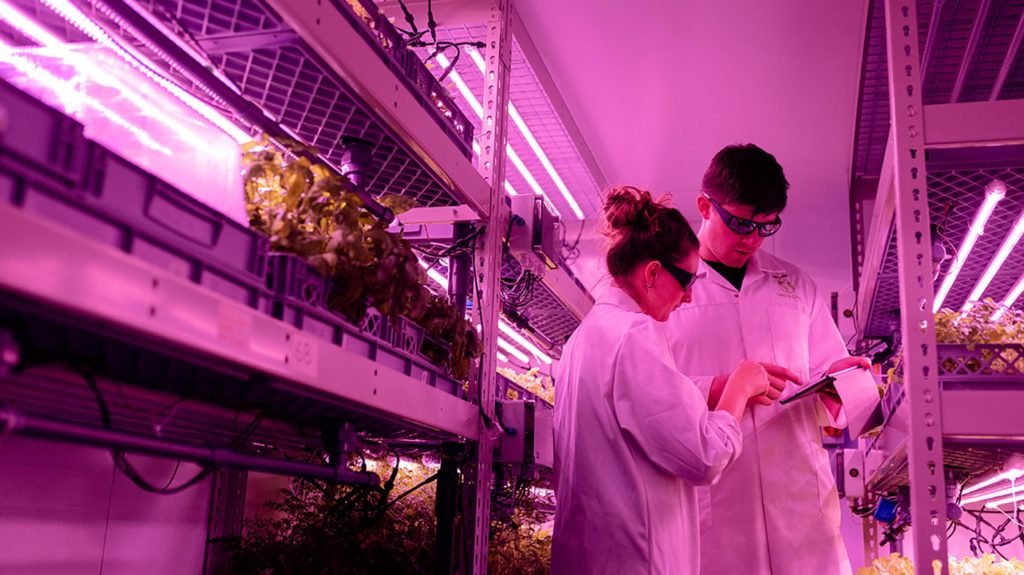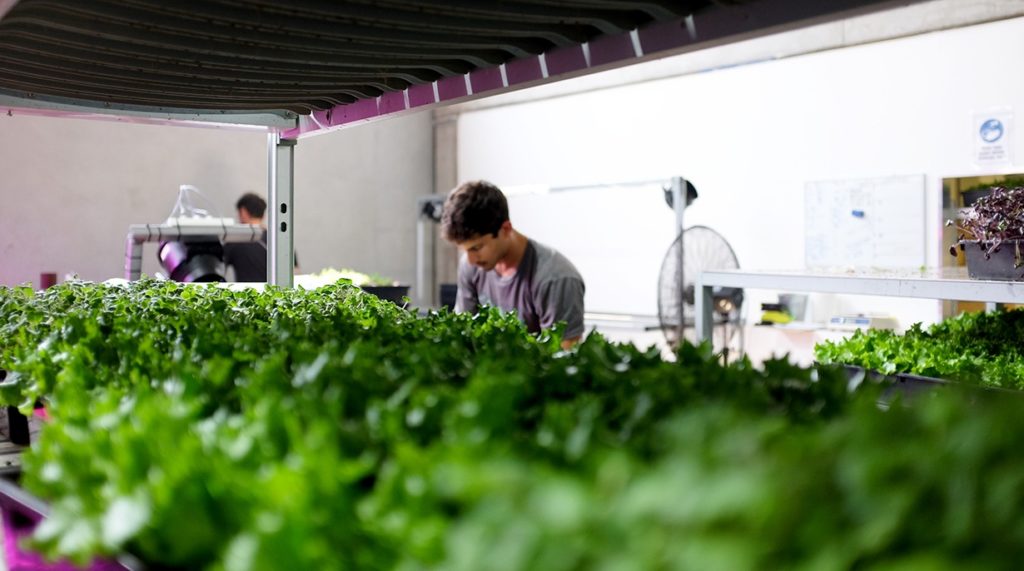Urban agriculture under the spotlight
A new report has examined the viability of commercial urban agriculture in Australia. Could it help to strengthen our food supply chains and feed our growing population?
Australia’s population has grown by 8.3 million since 1990. A new report by environmental advocacy group Sustainable Population Australia warns that continuing population growth will make us more vulnerable to food shortages in the future. If our population growth rate of 1.5 percent a year continues, in less than 50 years we’ll double our demands for food.
Meanwhile, climate change is placing increasing pressure on our farmers, who grow and supply the majority of food sold in Australia. According to the Department of Agriculture, Water and the Environment, in recent decades, Australia has seen a shift towards higher temperatures and lower winter rainfall. This, along with increases in the frequency of extreme weather events such as drought, has had significant effects on many farmers.
Compounding the problem, our areas of productive land are shrinking. Declining water availability in some of our most important agricultural regions is threatening farm productivity. In coastal areas, farmland is being swallowed up by urban sprawl.

The urban alternative
To continue feeding our growing population, we need to start thinking outside the box. One answer could lie in urban agriculture. Hort Innovation recently commissioned a report that reviewed effective urban agriculture applications used overseas.
Hort Innovation’s Dr Vino Rajandran says high-tech urban agriculture is an emerging part of our horticulture sector. And despite low adoption of these systems in Australia compared to Asia, North America and Europe, there is increasing interest.
“As Australia’s climate becomes increasingly variable, the consumer demand for locally grown produce increases,” he says. “As sustainable production comes to the fore, technology-controlled local production systems are attracting more interest.”

A smarter system
The report reviewed systems such as turning car parks into urban farms, floating glasshouses, growing food using building facades and producing food in shipping containers.
Dr Kristen Stirling from agricultural consultancy RMCG, which developed the report in partnership with University of Technology Sydney and global urban agriculture consultancy Agritecture, says there are a number of benefits to urban agriculture systems.
“You can control the climate in these production systems,” she says. “As we head into a more variable climate, that ability to control your production system is quite attractive. These types of systems can grow all year round; they’re not constrained by seasons.
“Urban agriculture also offers the ability to shorten your supply chain. You’re literally growing food next door to your market or your consumer. And as we’ve seen with COVID, when supply chains are disrupted, it’s not great for food security.”

Planning is everything
However, Dr Stirling says not all systems reviewed in the report were viable in Australia.
“There are factors that increase cost, such as high land prices in cities and the significant expenditure required to establish these systems,” she says. “Based on our modelling data and economic analysis, the two systems that were the most profitable were the rooftop glasshouse using a vertical production system and the building facade.”
But while these methods of urban agriculture show promise, they need effective planning and management if they’re to become commercially viable.
“You need a good business model when looking at this type of production,” Dr Stirling says. “You can’t get the economies of scale you’d get with growing a lot of plants out in a field; you’re in a smaller environment. So you need to focus on a good product you can turn over quickly. You need to think about how to market it to ensure you get a premium price. And you need to capitalise on the fact that it’s food grown locally using safe techniques.”

Public perception
Another challenge facing urban agriculture in Australia is social acceptance. Dr Stirling says research has shown that some people believe food grown in cities isn’t safe.
“There are some perceptions that it’s not safe, because it’s not traditional agriculture,” she says. “We need to increase consumer awareness about how food is grown in these systems. It’s super safe; it follows a lot of quality assurance.
“The other thing that would be great to see is educating our urban planners that urban agriculture is possible. And making sure that the planning regulations enable this. Because people just don’t tend to think of growing food in a city.”

The future of farming
It’s important to recognise that urban agriculture can’t replace traditional agriculture. As Dr Stirling explains, urban farming systems are merely adding another link to the chain.
“It’s not an either/or situation,” she says. “Urban agriculture complements traditional systems. It provides us with a back-up or alternative to how we normally produce food.”
The high-tech nature of urban agriculture also has the potential to attract a younger, more technology-oriented generation towards farming.
“One of the things that makes it an exciting area is the fact that it might appeal to younger generations,” Dr Stirling says. “It’s fairly intensive technology, and that tends to be quite attractive. And it’s a bit different to what we think of in terms of traditional farming. So hopefully, it entices a few more young people into the industry.”









